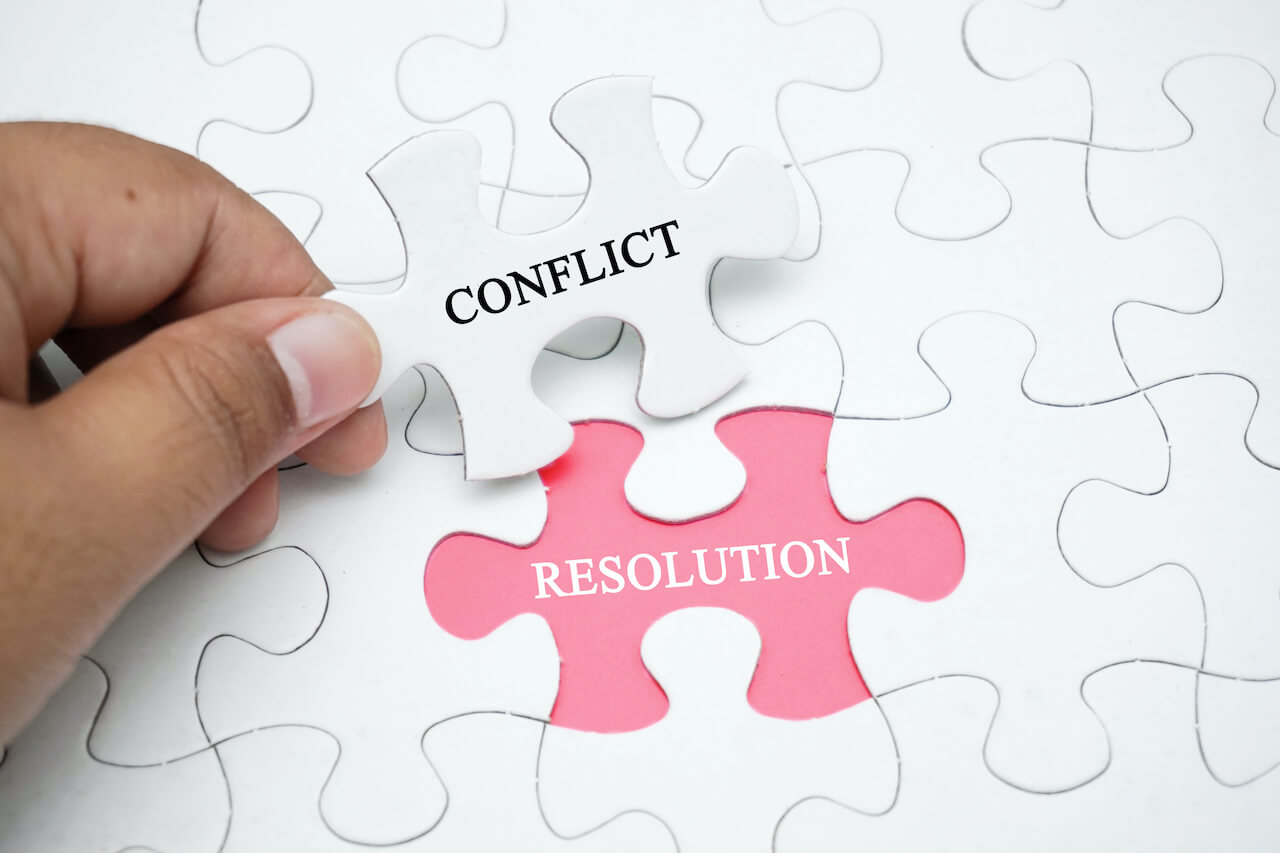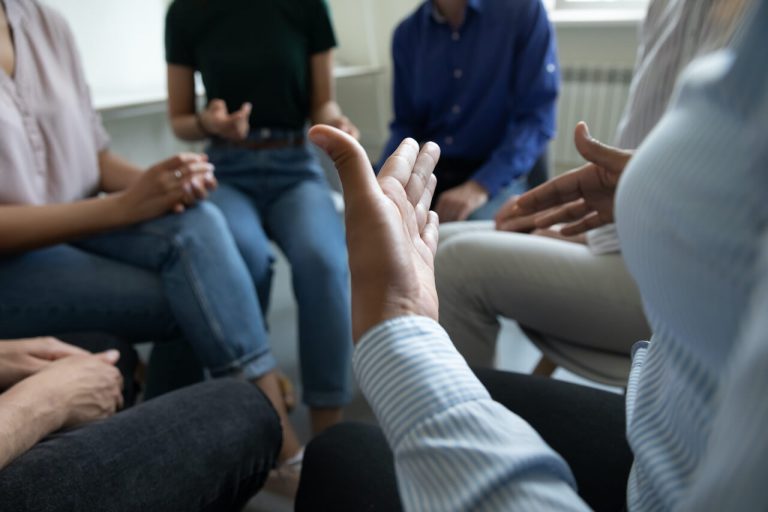Conflict Resolution Activities for Adults
What is conflict?
Conflict is when two or more people have a disagreement or encounter a problem. It can start small and appear to be insignificant. However, if left unresolved it can grow and become a serious issue.
This can occur anywhere. Children and adults encounter conflict, at school, at work, and at home. It can make people very unhappy and can have a negative impact on your professional and personal life. It is a good idea to try and tackle conflict in the early stages before it grows into something unmanageable.
What is conflict resolution?
Conflict resolution refers to addressing the issue and finding a common ground. It is a way to find peace and prevent a more serious issue from arising. Conflict resolution is a useful skill for all adults to acquire, both for their professional and their personal life.
The key to conflict resolution is to analyze the issue and ascertain the cause. Only when it is understood by both parties, can it be effectively managed and a solution found.
Why is conflict resolution important in the workplace?
If you encounter conflict at work with another colleague, this can have a detrimental effect on your quality of work. It can increase your stress levels and cause you to feel anxious about going to work each day.
If you are unable to resolve conflict with a colleague, your boss may start to notice and think that you are being unprofessional. It is best to nip it in the bud and find a resolution that works for both of you, so you are able to get back to your job and remain professional.
Conflict resolution skills
There are some required skills in being able to resolve conflict. Without these, you will struggle to enter a conflict resolution situation and it will be unlikely to improve.
Understanding
First, you must be able to understand how negatively this conflict is impacting both you and the other person. If you can reach this understanding, you will also understand why conflict resolution is so important.
Empathy
Empathy is required to begin conflict resolution as it is important to understand how the other person may be feeling. You need to empathize with their situation and realize that this is causing negative emotions. Once you reach this empathy, you can begin to find a solution that works for both of you.
Responsibility
There is no way to resolve a conflict if you cannot accept responsibility for your part in it. It is crucial to be able to admit where you are wrong in order to make amends. This is an important skill in all areas of life, as it is only from owning up to our mistakes that we are able to learn from them.
Communication
After you have understood the situation, it is now time to discuss it, using open and considered communication. It is important to discuss any issues in order to find a mutual resolution.
Conflict resolution activities
There are numerous conflict resolution activities for adults and children alike. Below are just a select few of these activities that will help adults to improve the above-mentioned skills and be more adept at conflict resolution.
Active Listening
Often, conflict can arise from a misunderstanding. The best way to correct this is to use active listening to really understand what is being said. This activity takes 15 minutes and involves listening and asking questions in pairs.
First, person A asks a question, to which person B responds. After they answer, person B then asks a question back. This question must be related in some way to the initial question, to keep the conversation going.
This goes back and forth for 4 minutes, using open questions. Open questions require more than a yes or no answer, allowing for the conversation to flow freely.
After these four minutes are up, the next round starts with person B asking the first question. Again, there is a response and a related question in return.
When two rounds are completed, there is a reflective discussion. Each pair thinks about any difficulties they encountered and what they learned from this exercise. They can also discuss how they might utilize these lessons while encountering conflict.
Debate vs Dialogue
This activity takes 20 minutes and is also completed in pairs. The pair face each other with one fist out, as though they are playing rock, paper, scissors. Then, they say “nothing, something, anything!” and shout out an object. This could literally be anything; car, dog, flower, table.
They then spend three minutes debating that their own item is better than the other. After three minutes, they will then spend five minutes asking each other questions about their items and listening to each other carefully. They must now come up with an agreement about which item is better.
Following this, a reflective discussion takes place. It is important for everyone to now realize that debating is utilized simply to prove you have the better view. While the dialogue is utilized in order to reach an understanding.
During this reflection, it is also useful to consider whether the pair felt differently during the debate compared to the dialogue and what was different about each. They can also consider how it was they were able to reach an agreement. These skills are very easily transferable into conflict resolution situations.
Positive Definitions
This conflict resolution activity is useful as an ice breaker and as a way to promote understanding of conflict resolution.
This activity takes 20-30 minutes and is best in groups of four or five people. Give each group a marker pen and a big piece of paper.
Ask the groups to first write a definition of conflict management. All people in the group must agree on this definition before it is written down.
Then, ask them to write down any negative issues they think could arise from conflict in the workplace. Finally, ask them to write down any positive outcomes of conflict.
Once this is complete, each group can discuss what they have considered and share this with the other groups.
Arm Wrestle
This is a very quick activity, completed in pairs. Without saying the phrase ‘arm wrestle’ demonstrate the position and ask them to sit the same way. Explain that a point is received each time the back of your partner’s hand touches the table. Time this for ten seconds.
Ask how many points each person gained. If neither partner got many points, ask why. Were they in a stale-mate, each trying to only get points for themself? If both partners got many points, ask why. Did they communicate and agree to share the points?
This activity is a great way to promote the importance of communication. It also shows how everyone is better off when we talk instead of going against each other.
Knot or No Knot
This activity is a great way to ascertain different people’s strengths while working as a team.
Without anyone seeing, place a long rope in a pile on the floor. Ask the group if there will be a knot or no knot when the rope is pulled at both ends. The group must decide unanimously on a consequence if they guess wrong.
As they discuss their answer, there may be one or two people who have very strong opinions. You can ask these people how they were able to convince the rest of the group, or why they eventually changed their minds. This can help people understand more about the way they communicate in a team.
Afterward, you can ask the group what would happen if they had chosen a serious consequence such as donating $1000 each. Would they have communicated differently, or stood their ground more assertively?
Orange Negotiation
For this activity, split the group into two smaller groups; A and B. Tell the groups that there is a man who has one incredibly rare orange that they all want to buy. They must negotiate with this man, who will decide which group gets to buy the orange. At any one time, there can only be one spokesperson for each group who will try to persuade the man to sell them the orange.
Explain to group A that they need the orange pulp because it is a required ingredient to make a substance that will combat global warming effects. Then, explain to group B that they need the orange rind to make a vaccine for a deadly disease that could ravage the Earth. Neither group is aware of the other group’s requirements.
Watch how each group tackles this activity. It could be that they simply try to persuade the man to sell them the orange, utilize the one part they need, and then decide to throw the rest away. Or, they may end up going to the other group and having a discussion. Then, they will realize that they can share the orange and combine their resources to give the man a bigger offering for the orange.
Once the activity is over, you can explain to them that they could easily have reached a mutually advantageous decision if they had only communicated with one another.
Pushy Pairs
This is a very simple activity, completed in pairs.
Ask the pair to face each other with their arms out and hands touching. Tell them to push against each other’s hands for a few seconds as hard as they can. Then, as they release, ask if they felt relief.
Explain that this is a physical representation of conflict. Two sides are pushing against each other, causing each side to feel that they cannot ease up without being pushed over. To resolve conflict, we must stop pushing and allow ourselves to have a break in which to think and communicate.
Role Play
This activity can be very useful to help people learn more empathy. Ask a pair of people to pretend to be each other and start a discussion.
By pretending to be the other person, each can begin to understand the other’s perspective. It can be a useful way to resolve conflict in the workplace and provide a safe space for an open discussion.
Utilize these skills
Whether you are an employer or employee, you could bring some of these conflict resolution activities to your workplace. Suggest a training session in which everyone can learn some of these skills and problem-solving tactics.
Hopefully, with these lessons, you will find easier ways to resolve any conflict that may arise for you.





